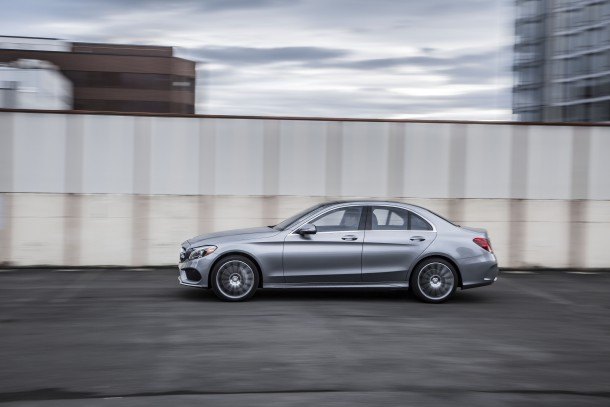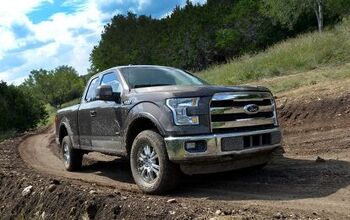Luxury Car Sales Are Plunging in America in Early 2016
Through the first one-sixth of 2016, U.S. sales of passenger cars sold by so-called premium brands plunged 17 percent. That year-over-year loss of nearly 25,000 sales occurred over the course of the auto sales calendar’s two lowest-volume months.
Lost in the story of booming auto sales volume in February 2016 — the highest-volume February since 2001 — was the underachieving premium market. Auto sales jumped 7 percent in February, a gain of 86,000 units, but 19 premium brands — from sector-leading Mercedes-Benz to one-model Alfa Romeo — combined for only a 1-percent year-over-year uptick during the same period.
Why, in such an apparently healthy market, are premium auto brands collectively losing market share?
There are three key reasons. First, their SUV/crossover sales are shooting through the roof and those high-riding utilities are stealing some of the traditional luxury car’s limelight. Over the course of January and February, a dozen premium brands produced 150,000 SUV/crossover sales, up 17 percent, or 22,000 units, compared with the same period one year ago.
In February specifically, Lexus, the top-selling premium auto marque, lost 1,883 car sales. But Lexus added 1,978 SUV/CUV sales. In February 2015, Lexus cars narrowly outsold Lexus utilities. One year later, Lexus utilities easily outsold Lexus cars.
Or consider Porsche, which is quickly becoming a prominent player in the luxury arena despite decreasing sportscar interest. The Cayenne and Macan utilities combined for a 670-unit increase, easily masking the Porsche car division’s 311-unit decline.
What about rebounding Volvo? The XC60 and the new XC90, which now accounts for over half of all U.S. Volvo sales, added 1,645 sales in February, year-over-year. Volvo’s other models garnered 397 sales.
At BMW, 2015’s top-selling premium auto brand ( allegedly), added 1,112 SAV sales across five X models in February, but that wasn’t enough to make up for 3,815 fewer car sales.
Indeed, while the losses accrued by passenger cars across all premium auto brands were more than matched by huge improvements from their SUV/crossover sales in February, the same can’t be said for the first one-sixth of 2016 on the whole. Sales across the premium spectrum are down 1 percent this year despite the SUV/CUV sector’s 17-percent increase and the fact that these higher-riding vehicles now account for 55 percent of all U.S. sales in premium brand showrooms.
Second, during the month of December, when luxury auto sales traditionally take off, luxury cars which may have been purchased or leased in the early part of 2016 were pulled forward into the final month of 2015.
Yes, year-over-year, luxury brand car volume was down 8 percent in December, but it would have been even worse if, according to AutoNation CEO Mike Jackson, incentives weren’t so high.
The third reason is an extension of reason numero deux. Sales were being pulled forward precisely because automakers and their dealers recognized that demand was decreasing. And what a decrease in demand we’re seeing now.
Over the last three months, between December 2015 and February 2016, car volume at 19 premium auto brands plunged 13 percent, or 34,000 sales. Acura, Alfa Romeo, Audi, BMW, Cadillac, Infiniti, Jaguar, Lamborghini, Lexus, Maserati, Mercedes-Benz, Porsche, and Volvo all sold fewer cars during that period than during the same stretch of time one year earlier.
Largely, the exceptions weren’t profound in their ability to buck the trend. Ferrari added 19 sales; Rolls-Royce another 12, according to the Wall Street Journal. Lincoln car volume rose 5 percent. Tesla, based on estimates from HybridCars.com, stood out with a 40-percent Model S improvement. These aren’t big players in the luxury car arena, mind you. Together, Ferrari, Rolls-Royce, Lincoln, and Tesla produced just 7 percent market share in the luxury car category since December.
Best sellers are certainly not exempt from the downturn. Through 2016’s first two months, the Mercedes-Benz C-Class, BMW 3 Series, Lexus ES, BMW 5 Series, Infiniti Q50, Mercedes-Benz E-Class (CLS inclusive), Acura TLX, Lexus IS, Mercedes-Benz CLA-Class, BMW 4 Series, and Audi A3 — the 11 top-selling cars at premium auto brands — were in decline. The most modest? A 7-percent decrease in A3 sales, a 6-percent 5-Series decline, and a 5-percent Q50 drop.
The C-Class and 3 Series are down 16 percent and 27 percent, respectively, a joint decrease of 5,000 sales.
On one hand, January and February don’t serve invariably as accurate predictors for the remainder of 2016. What happens during these two low-volume months doesn’t tell us everything about the trends we’ll see in May, June, July, and August. On the other hand, the fact that premium auto brands have already lost so many sales should cause us to wonder how many sales will be lost when the selling season really gets underway.
In the meantime, consider the decreasing strength of premium auto brands in America’s passenger car sector in early 2016. These brands produced 14 percent of America’s passenger car volume in January and February of 2015. In 2016, their share is down by two points.
U.S. car volume slid 0.4 percent in February. Exclude the disappointing results from these premium brands, and that 0.4-percent drop turns into a 1.6-percent improvement.
Thank Malibus, Maximas, and Miatas for that.
* Full Disclosure: I’m driving a GM Canada-supplied $85,510 GMC Yukon Denali this week. It’s not “luxury” but it is luxurious. We’ve nevertheless excluded high-end vehicles built by volume/mainstream brands from luxury/premium status for the purposes of this article.
[Images: Mercedes-Benz, Volvo, BMW]
Timothy Cain is the founder of GoodCarBadCar.net, which obsesses over the free and frequent publication of U.S. and Canadian auto sales figures. Follow on Twitter @goodcarbadcar and on Facebook.
More by Timothy Cain
Latest Car Reviews
Read moreLatest Product Reviews
Read moreRecent Comments
- JMII My wife's next car will be an EV. As long as it costs under $42k that is totally within our budget. The average cost of a new ICE car is... (checks interwebs) = $47k. So EVs are already in the "affordable" range for today's new car buyers.We already have two other ICE vehicles one of which has a 6.2l V8 with a manual. This way we can have our cake and eat it too. If your a one vehicle household I can see why an EV, no matter the cost, may not work in that situation. But if you have two vehicles one can easily be an EV.My brother has an EV (Tesla Model Y) along with two ICE Porsche's (one is a dedicated track car) and his high school age daughters share an EV (Bolt). I fully assume his daughters will never drive an ICE vehicle. Just like they have never watched anything but HiDef TV, never used a land-line, nor been without an iPad. To them the concept of an ICE power vehicle is complete ridiculous - you mean you have to STOP driving to put some gas in and then PAY for it!!! Why? the car should already charged and the cost is covered by just paying the monthly electric bill.So the way I see it the EV problem will solve itself, once all the boomers die off. Myself as part of Gen X / MTV Generation will have drive a mix of EV and ICE.
- 28-Cars-Later [Model year is 2010] "and mileage is 144,000"Why not ask $25,000? Oh too cheap, how about $50,000?Wait... the circus is missing one clown, please report to wardrobe. 2010 AUDI A3 AWD 4D HATCHBACK PREMIUM PLUS
- 28-Cars-Later So Honda are you serious again or will the lame continue?
- Fred I had a 2009 S-line mine was chipped but otherwise stock. I still say it was the best "new" car I ever had. I wanted to get the new A3, but it was too expensive, didn't come with a hatch and no manual.
- 3-On-The-Tree If Your buying a truck like that your not worried about MPG.




































Comments
Join the conversation
We are all station wagon drivers now.
Give a station wagon several extra inches of ground clearance and compromised sight lines .... ta da, you have a popular product! Just don't call it a station wagon :).